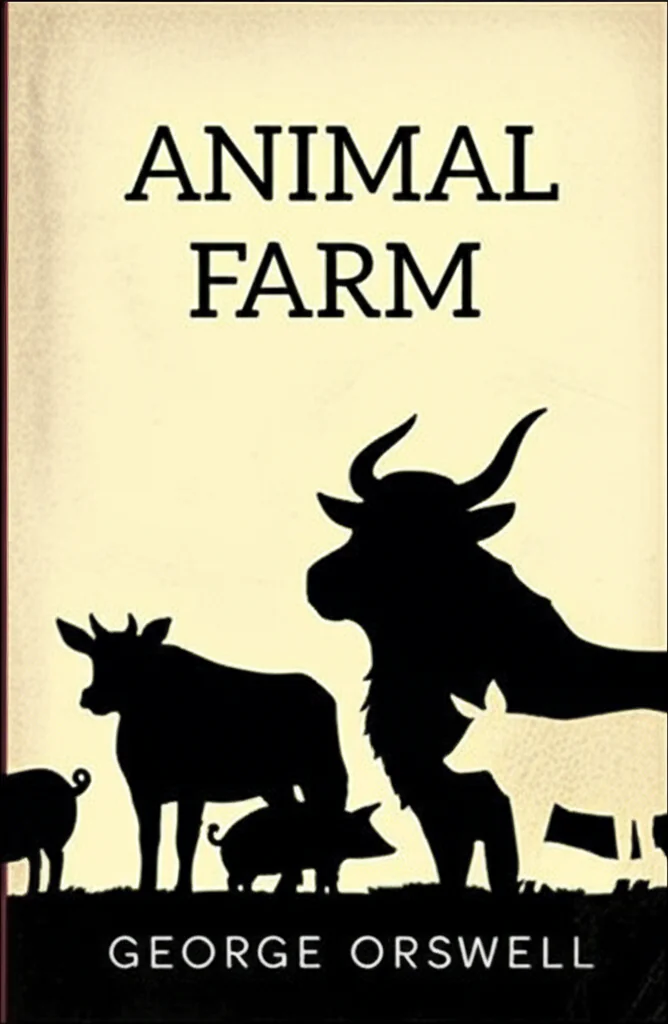Support our educational content for free when you purchase through links on our site. Learn more
What Is the Main Plot of *1984*? Unraveling Orwell’s Dystopia 📖
Have you ever wondered what it truly means when someone says, “Big Brother is watching you”? Or why 1984 remains one of the most haunting and discussed novels decades after its publication? At Book Summary Review™, we’ve journeyed deep into George Orwell’s bleak vision of the future to uncover the main plot that has captivated—and terrified—readers worldwide. Spoiler alert: it’s not just about surveillance; it’s about the crushing power of control over truth, love, and even thought itself.
Stick with us as we peel back the layers of Winston Smith’s rebellion, the Party’s iron grip, and the chilling climax that leaves you questioning the very nature of freedom. And if you think you know the story, wait until you discover the plot twists and symbols that make 1984 a timeless masterpiece. Ready to dive in? Let’s explore why understanding this plot is more relevant today than ever.
Key Takeaways
- Winston Smith’s quiet rebellion against an all-seeing totalitarian regime forms the heart of 1984’s plot.
- The novel explores themes of surveillance, propaganda, psychological manipulation, and the power of language through Newspeak.
- Key characters like Julia, O’Brien, and Big Brother symbolize resistance, betrayal, and oppression.
- The dystopian setting of Oceania is a character in itself, shaping the story’s tension and stakes.
- 1984’s plot culminates in a harrowing climax that underscores the terrifying effectiveness of authoritarian control.
- The novel’s impact extends beyond literature, influencing modern culture, language, and discussions about privacy and freedom.
Ready to experience Orwell’s masterpiece?
Shop 1984 by George Orwell here:
Dive into the chilling world of 1984 and see why this story still matters in 2025 and beyond!
Table of Contents
- ⚡️ Quick Tips and Facts About the Main Plot of 1984
- 📚 The Dystopian World of 1984: Setting and Context
- 🕵️♂️ Who’s Who? Key Characters Driving the Plot of 1984
- 🔥 1. The Main Plot Unveiled: Winston Smith’s Rebellion Against Big Brother
- 🔍 2. Themes and Symbols That Shape the Storyline
- 💥 3. The Role of Surveillance and Propaganda in the Plot
- 🧠 4. Psychological Manipulation and Control: The Party’s Grip
- 📖 5. Plot Twists and Climax: How 1984 Keeps You Hooked
- 🎭 The Impact of 1984’s Plot on Modern Culture and Literature
- 🤔 Common Misconceptions About the Plot of 1984
- ✍️ How to Analyze the Plot of 1984 for Essays and Discussions
- 📺 Adaptations and Interpretations: Bringing 1984’s Plot to Screen and Stage
- 🔗 Recommended Links for Deep Diving into 1984
- ❓ Frequently Asked Questions About the Main Plot of 1984
- 📚 Reference Links and Further Reading on 1984
- 🎯 Conclusion: Why Understanding the Main Plot of 1984 Still Matters
⚡️ Quick Tips and Facts About the Main Plot of 1984
Welcome to the world of 1984, where Big Brother is always watching 👁️, and rebellion is a dangerous game. If you’re diving into George Orwell’s masterpiece or just curious about its core storyline, here are some quick, no-nonsense facts from the book lovers at Book Summary Review™:
- Main character: Winston Smith, a low-ranking Party member in Oceania.
- Setting: A dystopian future where the Party controls everything — thoughts, history, even language (hello, Newspeak!).
- Central conflict: Winston’s quiet rebellion against the totalitarian regime, which includes keeping a secret diary and falling in love with Julia.
- Themes: Surveillance, propaganda, psychological manipulation, loss of individuality, and the terrifying power of authoritarianism.
- Famous slogans: “War is Peace. Freedom is Slavery. Ignorance is Strength.”
- Plot climax: Winston’s capture and brutal re-education in the Ministry of Love, ending in his tragic acceptance of Big Brother.
If you want to know more about whether 1984 is an easy read or a brain-buster, check out our detailed article here: Is 1984 an Easy Read? 7 Surprising Truths You Need to Know 📚.
📚 The Dystopian World of 1984: Setting and Context
Orwell’s 1984 isn’t just a story; it’s a nightmare blueprint for a totalitarian future. Set in the superstate of Oceania, the novel paints a grim picture of a society where the government — known simply as “the Party” — has absolute control over every aspect of life.
Key Elements of the Setting:
- Oceania: One of three global superpowers, constantly at war with the others.
- Airstrip One: The novel’s primary location, formerly Great Britain, now a surveillance state.
- The Party: Led by the enigmatic Big Brother, the Party uses constant surveillance, propaganda, and fear to maintain power.
- Technology: Telescreens monitor citizens 24/7; privacy is a myth.
- Language: Newspeak, designed to eliminate rebellious thoughts by shrinking vocabulary.
This setting is crucial because it’s not just background — it’s a living, breathing antagonist that shapes every plot twist. Want to explore more dystopian worlds? Check out our Popular Books section for other mind-bending reads.
🕵️♂️ Who’s Who? Key Characters Driving the Plot of 1984
Before we unravel the plot, meet the players who make Orwell’s world tick:
| Character | Role | Significance |
|---|---|---|
| Winston Smith | Protagonist, Party member | The reluctant rebel whose story we follow. |
| Julia | Winston’s lover and fellow rebel | Represents youthful rebellion and desire. |
| O’Brien | Inner Party member | The deceptive antagonist who betrays Winston. |
| Big Brother | The Party’s omnipresent leader | Symbolizes totalitarian control and fear. |
| Emmanuel Goldstein | The supposed enemy of the Party | Represents the scapegoat and resistance myth. |
Each character is a symbol or tool in the Party’s machinery or Winston’s fight against it. Their interactions are the heartbeat of the plot.
1. The Main Plot Unveiled: Winston Smith’s Rebellion Against Big Brother
Here’s the juicy part — the plot that keeps readers glued:
- Winston Smith lives a bleak life under the Party’s iron fist, working at the Ministry of Truth, where he alters historical records to fit Party propaganda.
- Despite the omnipresent surveillance, Winston secretly starts a diary — a thoughtcrime — expressing his hatred for Big Brother.
- He meets Julia, and their forbidden love affair becomes a symbol of rebellion and hope.
- Together, they dream of overthrowing the Party, but their rebellion is doomed.
- O’Brien, who Winston believes is an ally, turns out to be a loyal Party agent who orchestrates Winston’s capture.
- The climax unfolds in the dreaded Ministry of Love, where Winston is tortured and brainwashed until he betrays Julia and accepts Big Brother’s dominance.
This plot is a harrowing journey from hope to despair, showcasing the terrifying power of totalitarianism.
2. Themes and Symbols That Shape the Storyline
Orwell’s genius lies not just in the plot but in the rich themes and symbols woven throughout:
- Surveillance: The Party’s eyes are everywhere, symbolized by the omnipresent posters of Big Brother.
- Language Control: Newspeak limits thought, showing how language shapes reality.
- Memory and History: The Party rewrites the past, erasing truth.
- Psychological Control: Concepts like doublethink force citizens to accept contradictions.
- Room 101: The ultimate torture chamber, representing personal fears and the breaking point.
These themes aren’t just academic — they’re warnings about the fragility of freedom.
3. The Role of Surveillance and Propaganda in the Plot
The Party’s surveillance state is the novel’s backbone. Telescreens, microphones, and informants create a world where privacy is extinct. Winston’s every move is monitored, making rebellion a near-impossible feat.
Propaganda saturates the airwaves and print, with slogans like “Ignorance is Strength” and “War is Peace” twisting reality. The Party’s control of information ensures that citizens are trapped in a web of lies.
This theme resonates today, reminding us of the dangers of unchecked government power and media manipulation. Britannica’s detailed exploration of propaganda offers a great background on how these tactics work in real life.
4. Psychological Manipulation and Control: The Party’s Grip
The Party doesn’t just control actions — it controls minds. Through techniques like doublethink (holding two contradictory beliefs simultaneously) and thoughtcrime (criminalizing unorthodox thoughts), the Party crushes dissent.
Winston’s torture in the Ministry of Love is a brutal example of brainwashing, where physical pain and psychological terror force him to betray his deepest beliefs. This chilling portrayal aligns with real-world accounts of political indoctrination and psychological warfare.
5. Plot Twists and Climax: How 1984 Keeps You Hooked
Orwell’s 1984 isn’t just bleak; it’s a masterclass in suspense:
- Winston’s secret diary and romance with Julia offer moments of hope.
- The shocking betrayal by O’Brien flips the story on its head.
- The harrowing scenes in Room 101 and Winston’s eventual capitulation deliver a gut punch that lingers long after the last page.
The novel’s structure keeps readers on edge, making it a timeless classic in dystopian literature.
🎭 The Impact of 1984’s Plot on Modern Culture and Literature
1984 has left an indelible mark on culture and language:
- Terms like Big Brother, Orwellian, and doublethink have entered everyday speech.
- The novel inspired countless films, TV shows, and books exploring surveillance and authoritarianism.
- Its warnings about propaganda and control remain relevant in today’s digital age.
For a deeper dive into how 1984 shaped literary themes, explore our Literary Themes section.
🤔 Common Misconceptions About the Plot of 1984
Let’s clear up some myths:
- ❌ 1984 is not about technology alone — it’s about power and control.
- ❌ Big Brother is not a real person but a symbol of the Party’s omnipresence.
- ❌ The novel isn’t just a political rant; it’s a complex exploration of human nature under oppression.
Understanding these nuances helps you appreciate the novel’s depth beyond the surface plot.
✍️ How to Analyze the Plot of 1984 for Essays and Discussions
If you’re tackling 1984 for school or book club, here’s a quick guide:
- Identify key plot points: Winston’s rebellion, his relationship with Julia, and his downfall.
- Explore themes: How do surveillance and propaganda shape the plot?
- Discuss symbols: What do Big Brother and Room 101 represent?
- Consider historical context: Orwell’s experiences with totalitarian regimes inform the story.
- Use quotes: Memorable lines like “Freedom is Slavery” illustrate the Party’s twisted logic.
For more tips, visit our Reading Tips category.
📺 Adaptations and Interpretations: Bringing 1984’s Plot to Screen and Stage
1984 has been adapted multiple times, each bringing its own flavor:
| Adaptation Type | Notable Versions | Highlights |
|---|---|---|
| Film | 1956 (Michael Anderson), 1984 (Michael Radford) | The 1984 film is praised for its faithful, bleak tone. |
| Stage | Various theatrical productions worldwide | Emphasizes psychological horror and political themes. |
| Radio | BBC Radio dramatizations | Focus on narrative and atmosphere. |
These adaptations help keep Orwell’s warnings alive for new generations.
🔗 Recommended Links for Deep Diving into 1984
Want to explore 1984 even further? Here are some trusted resources:
- George Orwell’s Official Website — Author biography and works.
- SparkNotes 1984 Summary — Detailed chapter summaries and analysis.
- Britannica on Propaganda — Understand the propaganda techniques Orwell critiques.
- The Guardian’s Review of 1984 — Insightful perspectives on the novel’s impact.
For more book summaries and reviews, visit our Book Summaries and Book Reviews categories.
❓ Frequently Asked Questions About the Main Plot of 1984
Q: Is 1984 based on a real place or event?
A: Not directly. Orwell combined elements from totalitarian regimes like Nazi Germany and Stalinist Russia to create the fictional world of Oceania.
Q: What is the significance of the title 1984?
A: Orwell chose a near-future date to warn readers about the dangers of unchecked government power.
Q: Does Winston ever truly defeat Big Brother?
A: Sadly, no. The novel ends with Winston’s complete submission, highlighting the Party’s terrifying control.
Q: Why is Newspeak important in the plot?
A: It symbolizes how language can be weaponized to limit thought and rebellion.
Q: Can 1984 be considered a love story?
A: In a twisted way, yes. Winston and Julia’s relationship is a form of resistance in a loveless society.
For more FAQs and detailed answers, check out our Popular Books section.
📚 Reference Links and Further Reading on 1984
- Orwell, George. 1984. Harvill Secker, 1949. Available on Amazon
- The Orwell Foundation — Resources and essays on Orwell’s works.
- BBC Bitesize 1984 Summary — Concise study guide.
- Literary Hub: The Enduring Legacy of 1984 — Contemporary analysis.
These references will deepen your understanding and appreciation of Orwell’s masterpiece.
🎯 Conclusion: Why Understanding the Main Plot of 1984 Still Matters
So, what’s the final takeaway from 1984? Beyond its grim narrative, Orwell’s novel is a timeless warning about the perils of unchecked power, surveillance, and propaganda. Winston Smith’s tragic journey from quiet rebellion to heartbreaking submission reminds us how fragile freedom can be when faced with authoritarian control.
Positives:
✅ 1984 masterfully combines a gripping plot with profound themes that resonate across decades.
✅ Orwell’s vivid dystopian world and memorable characters make the story unforgettable.
✅ The novel’s exploration of language, psychology, and power dynamics offers rich material for reflection and discussion.
Negatives:
❌ The bleak ending can be emotionally draining and may feel hopeless to some readers.
❌ Its dense political and philosophical ideas might overwhelm casual readers without context.
At Book Summary Review™, we confidently recommend 1984 as an essential read for anyone interested in literature, politics, or the human condition. Whether you’re a student, a casual reader, or a fan of dystopian fiction, understanding its main plot and themes will deepen your appreciation of this literary classic.
Remember that the warnings Orwell sounded over 70 years ago are still relevant today — from debates about privacy to the spread of misinformation. So, keep your eyes open and your mind sharp. Big Brother might be watching, but so are we. 😉
🔗 Recommended Links for Deep Diving into 1984
Ready to grab your copy or explore more? Here are some trusted shopping links for 1984 by George Orwell:
- 1984 by George Orwell: Amazon | Barnes & Noble | Harvill Secker Official
- Audiobook Version: Audible | Google Play Books
- Annotated Editions and Study Guides: SparkNotes 1984 | CliffsNotes 1984
Dive in and experience the chilling world of 1984 for yourself!
❓ Frequently Asked Questions About the Main Plot of 1984
What are the main themes in 1984 by George Orwell?
1984 explores themes of totalitarianism, surveillance, propaganda, psychological manipulation, and the power of language. Orwell warns how governments can control not just actions but thoughts and history itself, emphasizing the dangers of losing individuality and freedom.
Who is the main character in the novel 1984 and what is his role in the story?
Winston Smith is the protagonist — a low-ranking member of the Party who quietly rebels against the oppressive regime. His role is to embody the struggle for truth and freedom in a world dominated by lies and control, making his journey both personal and symbolic.
What is the significance of the dystopian society in 1984 and how does it relate to current events?
The dystopian society represents an extreme form of government control and loss of privacy. Its relevance today is striking, with ongoing debates about mass surveillance, fake news, and authoritarian tendencies worldwide. Orwell’s vision serves as a cautionary tale urging vigilance.
What is the meaning of the phrase “Big Brother is watching you” in the context of 1984?
This phrase symbolizes the Party’s constant surveillance and intrusion into private life. It reminds citizens that their actions and even thoughts are monitored, creating a climate of fear and obedience.
How does the novel 1984 depict a totalitarian government and what warning does it provide to readers?
The Party uses surveillance, propaganda, rewriting history, and psychological torture to maintain absolute power. Orwell warns that such regimes destroy truth, freedom, and humanity, urging readers to resist complacency and authoritarianism.
What is the relationship between Winston and Julia in 1984 and how does it drive the plot forward?
Winston and Julia’s secret romance is an act of rebellion against the Party’s control over personal lives. Their relationship introduces hope and human connection but also leads to their downfall, highlighting the Party’s power to crush dissent.
What is the ending of 1984 and what message does it convey about the dangers of government control and censorship?
The novel ends with Winston’s complete submission to Big Brother after brutal torture and brainwashing. This bleak conclusion conveys the terrifying effectiveness of totalitarian control and censorship in erasing individuality and resistance.
How does Newspeak function within the plot and themes of 1984?
Newspeak is the Party’s engineered language designed to eliminate rebellious thoughts by reducing vocabulary and simplifying grammar. It shows how language can be a tool of oppression, limiting freedom of thought and expression.
What role does propaganda play in shaping the citizens’ perception of reality in 1984?
Propaganda saturates every aspect of life, distorting truth and rewriting history to keep the Party in power. It manipulates citizens into accepting contradictions and falsehoods, illustrating how information control can enslave minds.
How does Orwell use the character O’Brien to illustrate betrayal and control?
O’Brien pretends to be an ally to Winston but ultimately betrays him, embodying the Party’s deceptive and manipulative nature. His role highlights the dangers of misplaced trust and the Party’s ruthless grip on power.
📚 Reference Links and Further Reading on 1984
- George Orwell’s Official Website — Author biography and works.
- The Orwell Foundation — Essays, resources, and critical analysis.
- The Guardian: 1984 by George Orwell – review | Children’s books — Insightful review and cultural context.
- Britannica: Propaganda — Understanding propaganda’s role in 1984.
- SparkNotes 1984 Summary — Chapter summaries and analysis.
- BBC Bitesize: 1984 Study Guide — Concise educational resource.
These sources provide authoritative insights and help verify facts discussed throughout this article.
We hope this comprehensive guide has illuminated the main plot of 1984 and deepened your appreciation for Orwell’s chilling masterpiece. Happy reading — and remember, stay curious and critical! 📖✨




